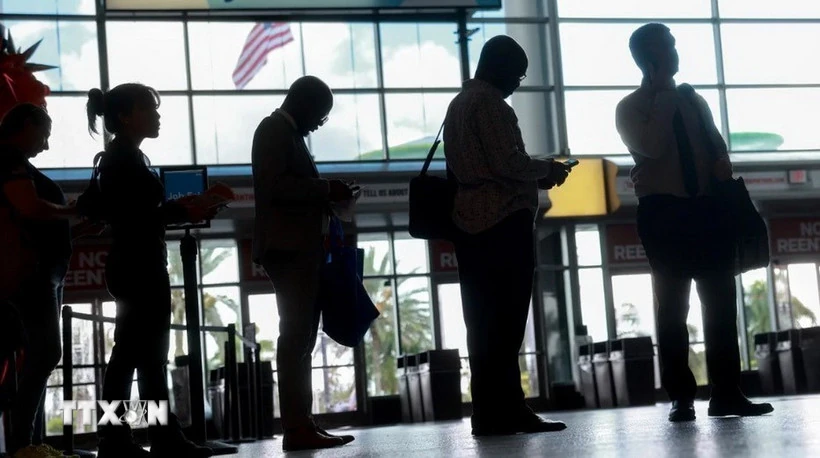According to data released by the US Department of Labor on August 7, the number of workers receiving unemployment benefits through “continuing claims” jumped to 1.97 million at the end of July, compared to 1.85 million at the beginning of January.
New jobless claims remain low, rising just 7,000 last week at the end of July, compared with 1.85 million at the beginning of January.
New jobless claims remain low, rising just 7,000 last week at the end of July, down from 1.85 million at the beginning of January. New jobless claims remain low, rising just 7,000 last week.
The figures reinforce a worsening picture of the US labor market, according to The Washington Post. Even without a wave of large layoffs, many workers are still unable to find new jobs and face longer periods of unemployment.
Another jobs report released last week showed businesses hiring at nearly the slowest pace in more than a decade, excluding the pandemic.
“We should not underestimate the impact of slowing hiring,” said Daniel Zhao, chief economist at Glassdoor. “It means that unemployed people have a harder time getting back into the workforce, and they may have to accept worse jobs, or that those who are employed cannot advance their careers.”
Labor experts say the labor market is slowing due to factors such as higher tariffs from the Trump administration, federal spending cuts and tighter immigration policies.
New tariffs on dozens of countries took effect early on August 7, raising import costs — which could fall on American consumers and businesses, further slowing hiring.
“In 2025, businesses are facing a huge amount of uncertainty,” Zhao said. “It is this uncertainty that makes it difficult for companies to commit to hiring-related plans.”
Federal layoffs have also accelerated and will continue to rise this year, potentially spreading to other sectors. A Supreme Court ruling in July allowed the Trump administration to continue with job cuts.
The report on August 7 added to evidence of a weakening labor market. A jobs report released on August 1 showed the labor market was much slower than previously reported, with job gains in July falling short of expectations, and employment figures for May and June were also revised down sharply – by 258,000 fewer jobs than initially reported.
The unemployment rate in July also edged up slightly to 4.2%, but remains relatively low.
President Donald Trump took the unprecedented step of firing the head of the Bureau of Labor Statistics, Erika McEntarfer, just hours after the data was released.
Uncertainty over trade policy is said to be starting to affect labor-sensitive sectors that are vulnerable to higher tariffs. Many retail, construction and manufacturing businesses have paused hiring and expansion plans due to concerns about rising import costs.
Meanwhile, hiring in office jobs has been virtually stagnant for months.
Economists say businesses may be trying to retain workers instead of laying them off because of the fierce competition and labor shortages they have experienced since the pandemic. However, if economic conditions continue to worsen, a wave of large-scale layoffs may occur./.
According to VNA
Source: https://baothanhhoa.vn/gan-2-trieu-nguoi-my-nhan-tro-cap-that-nghiep-muc-cao-nhat-ke-tu-dai-dich-257318.htm








![[Photo] National Assembly Chairman Tran Thanh Man receives First Vice Chairman of the Federation Council of the Federal Assembly of the Russian Federation](/_next/image?url=https%3A%2F%2Fvphoto.vietnam.vn%2Fthumb%2F1200x675%2Fvietnam%2Fresource%2FIMAGE%2F2025%2F12%2F02%2F1764648408509_ndo_br_bnd-8452-jpg.webp&w=3840&q=75)





































































































Comment (0)